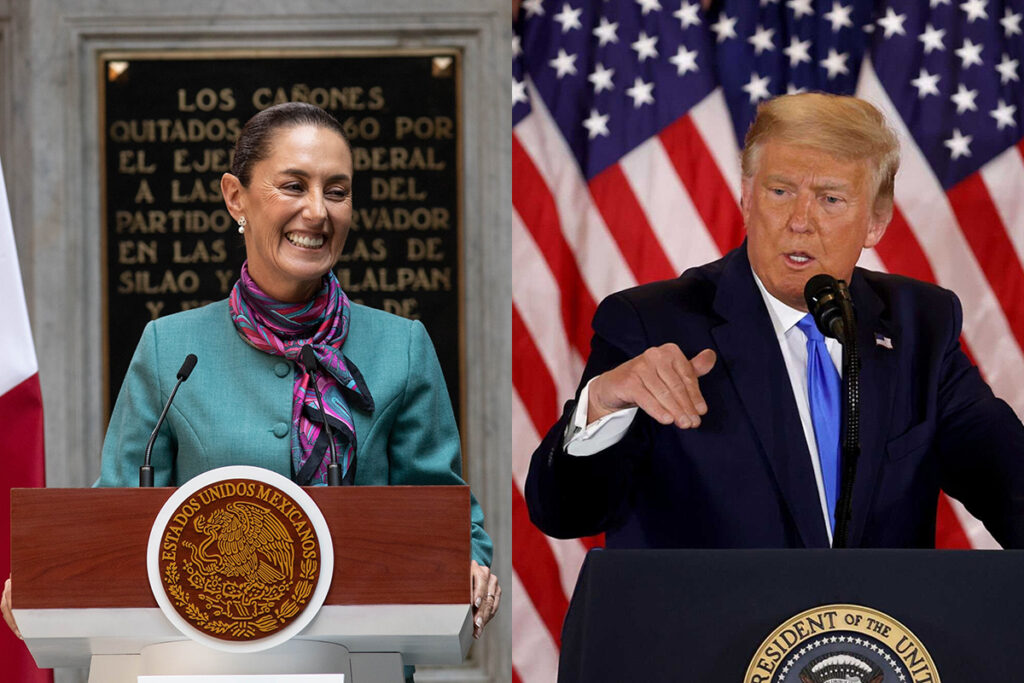The United States and Mexico have reached a deal to delay the implementation of a 25% tariff on Mexican imports for one month. The agreement, made after negotiations between U.S. President Donald Trump and Mexican President Claudia Sheinbaum, comes in exchange for increased border security measures by Mexico. The delay temporarily avoids a policy that could have significantly impacted trade, raised consumer prices, and slowed economic growth in both countries.
Mexico will deploy 10,000 National Guard troops to its northern border to curb drug trafficking, particularly fentanyl smuggling into the U.S. In discussions leading up to the deal, Sheinbaum also called for the U.S. to address the flow of high-powered firearms into Mexico, which have been linked to criminal violence. The agreement provides a temporary reprieve, but whether a long-term resolution can be reached remains uncertain.
Trade War Escalation and Retaliation
The tariff delay comes after Trump signed an executive order imposing broad trade penalties, including a 10% tariff on Chinese imports and measures to close a loophole that allowed Chinese e-commerce companies to ship duty-free packages under $800. These tariffs triggered immediate backlash from trading partners, leading to retaliatory measures.
Canada responded with its own 25% tariffs on $155 billion CAD worth of U.S. goods, with an initial $30 billion taking effect immediately. The remainder is set to follow within three weeks to give Canadian businesses time to adjust. China has vowed to challenge the U.S. tariffs at the World Trade Organization and has announced plans for countermeasures, though specific actions remain unclear.
Economic and Market Impact
The tariff announcement initially caused stocks to drop on Monday morning, though they recovered following the agreement with Mexico. Economists have warned that the tariffs could raise costs for American businesses and consumers, potentially leading to economic instability. Given that Mexico is the U.S.’s largest trading partner, the potential consequences of these tariffs are significant.
This latest agreement mirrors past negotiations between Trump and Mexico, where tariff threats were used as leverage. During his first term, Trump also backed down from imposing tariffs after Mexico agreed to deploy its National Guard and implement stricter immigration policies. The current deal follows a similar pattern, with Mexico once again making security commitments in exchange for trade relief.
Trump’s Hardline Approach to Canada and Trade
While Mexico has temporarily avoided the tariffs, Trump has maintained a combative stance toward Canada. He has dismissed the need for Canadian imports in key industries like agriculture, lumber, and automobiles, arguing that the U.S. should focus on self-sufficiency. His administration claims that the tariffs are necessary for national security, but Trump has also emphasized reducing trade deficits.
Adding to the controversy, Trump suggested that Canada would benefit from becoming part of the U.S., eliminating the need for tariffs altogether. His administration has sent conflicting messages about the purpose of the tariffs, with officials framing them as measures against drug trafficking and illegal immigration, while Trump continues to stress economic dominance.
Future Uncertainty in U.S.-Mexico Trade Relations
The one-month delay provides time for further negotiations between the U.S. and Mexico, led by Secretary of State Marco Rubio, Treasury Secretary Scott Bessent, and Commerce Secretary Howard Lutnick. However, if no long-term agreement is reached, the U.S. could still impose the 25% tariffs, reigniting trade tensions.
The temporary deal prevents an immediate economic crisis but does not resolve the deeper issues driving U.S. trade policy. As negotiations continue, the coming weeks will determine whether the delay leads to a lasting solution or if the threat of tariffs resurfaces as a major economic concern.


